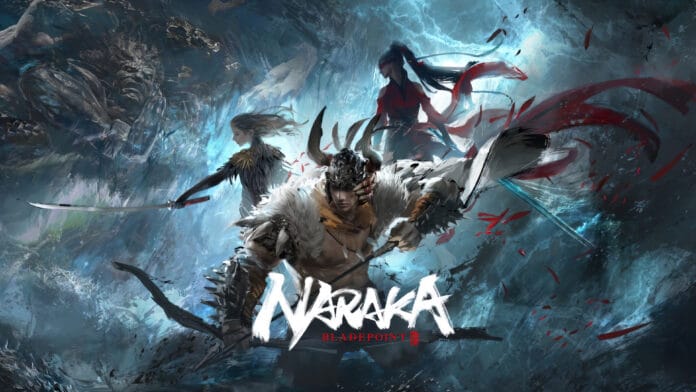Naraka: Bladepoint puts a new spin on the Battle Royale genre, making it a Steam hit. But is the game really worth it? Our test reveals it.
There are really not enough Battle Royale games to choose from at the moment. At most, the fact that the most successful genre representatives such as Fortnite, Apex Legends or Call of Duty: Warzone are all shooters at heart and therefore play similarly.
Naraka: Bladepoint by the Chinese developer 24 Entertainment actually brings a breath of fresh air to the genre by swapping firearms for swords, spears and knives – and thus becomes a huge success on Steam overnight. Whether the hype is justified, however, you can find out in our review.
A Battle Royale again, but…
As you can imagine from the introduction, Naraka: Bladepoint is a battle royale game. Accordingly, all the cornerstones of the genre can be found here. 60 players cavort on a sprawling island. They collect loot in the form of weapons, armour, upgrades and healing items. A death zone shrinks further and further until only one player or three-man team remains. You know this, it’s nothing new.
Nevertheless, Naraka: Bladepoint feels completely different from the well-known genre representatives – and not only because it is much prettier and, thanks to the Asian setting, more atmospheric than, for example, a simple Playerunknown’s Battleground.
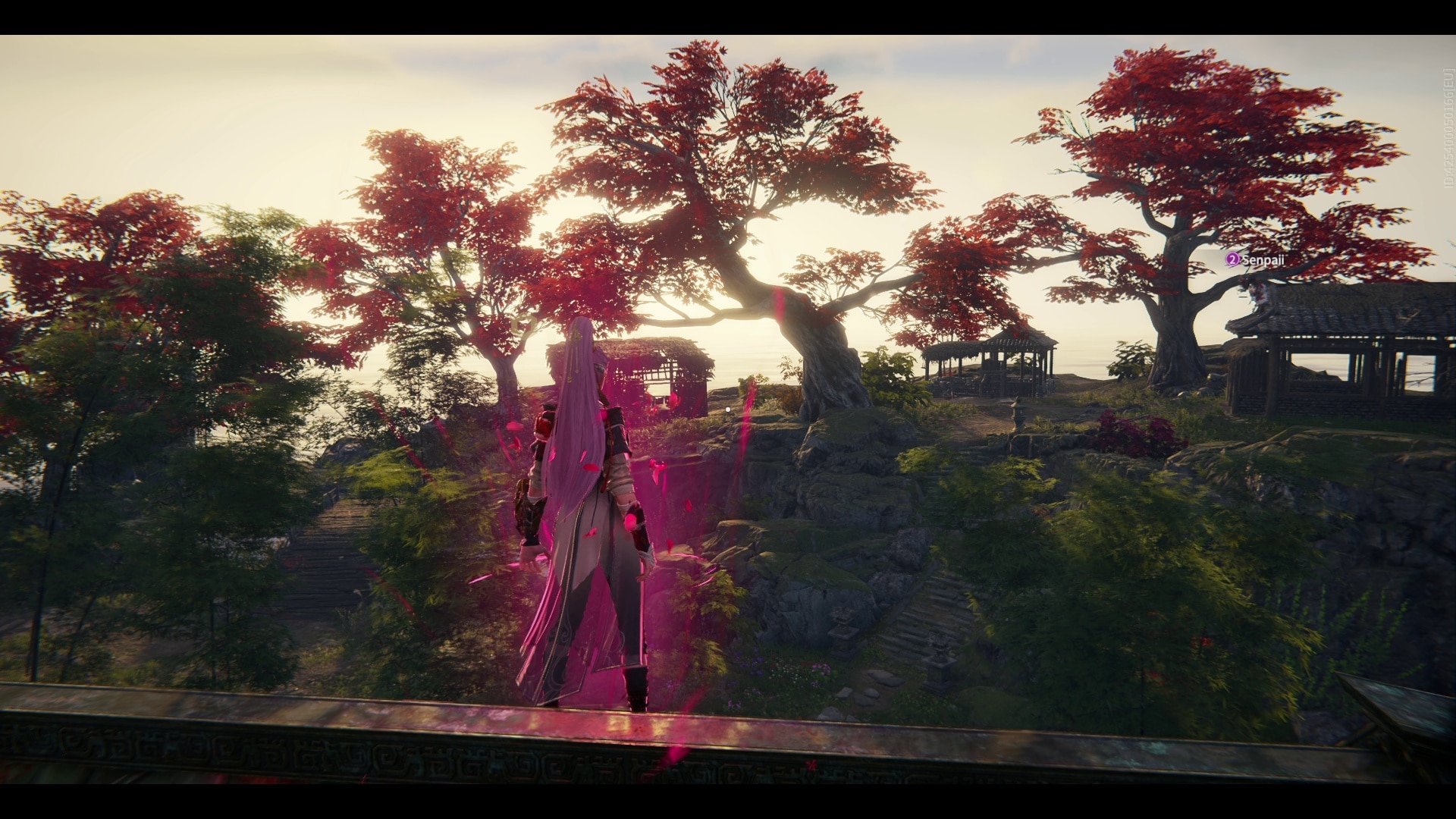
The biggest difference to the competition is the focus on melee combat. Firearms such as bows, muskets and pistols do exist, but these are generally only used to scratch the enemy a bit before the actual duel. If you meet your end in Naraka, it is guaranteed to be at the tip of a spear or by the blade of a sword.
To prevent this from happening too often, you will be introduced to the game very carefully. There are several tutorials, training modes and bot matches – you are even forced to take part in the latter. Even if you start the ranked mode directly after the introduction to the almost non-existent story, the first rounds are mainly against AI opponents.
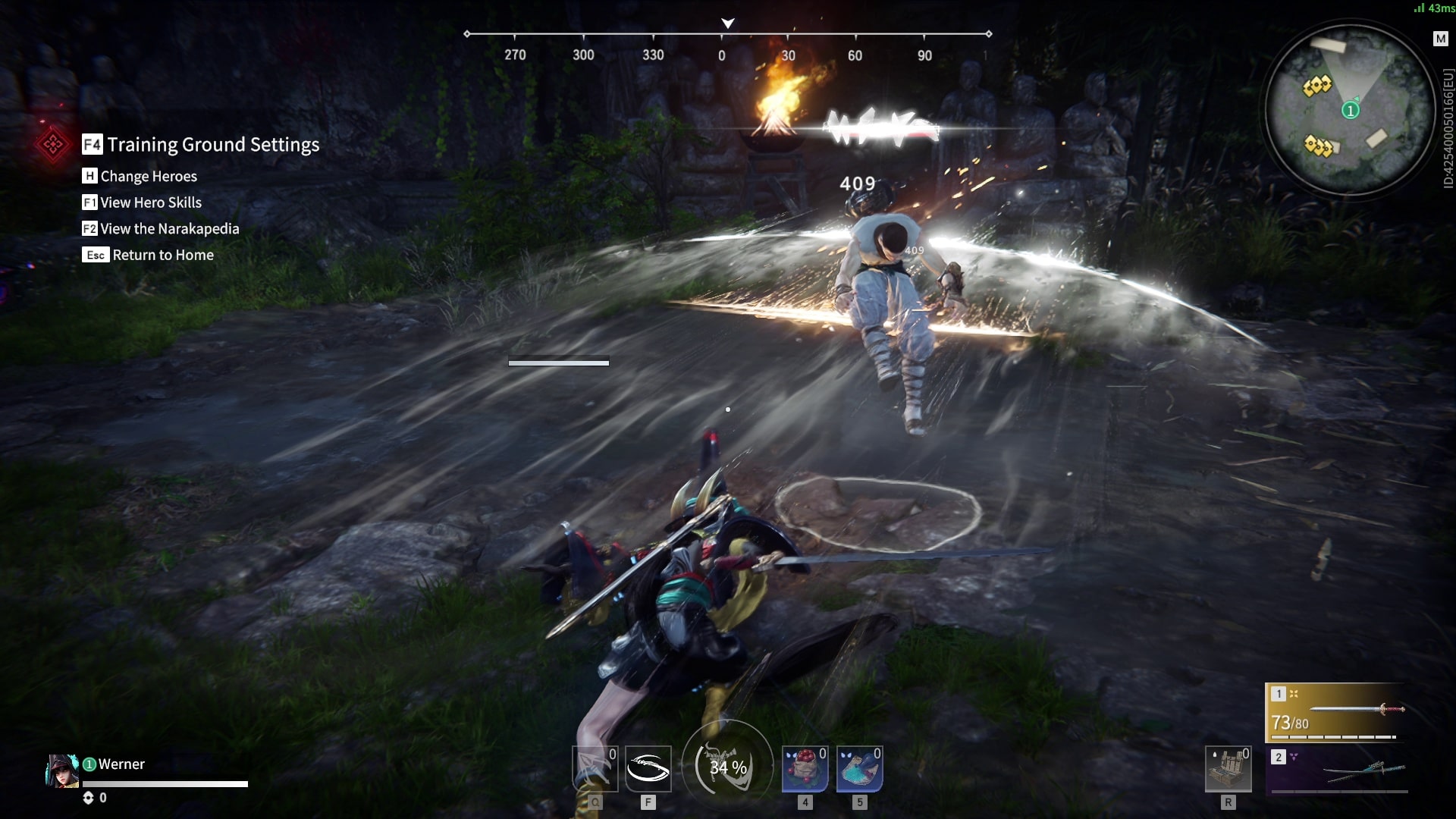
The bots are not particularly bright and can be knocked out by bluntly hammering the attack buttons. We didn’t find this particularly fun. The bots also prepared us only sparsely for the fight with human opponents – although this would have been bitterly necessary.
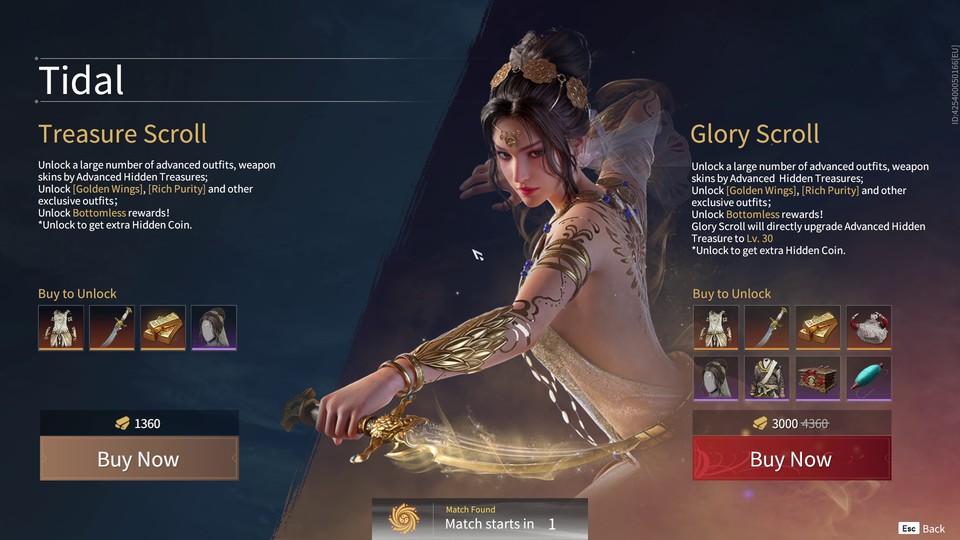
Watch out: microtransactions everywhere!
Although Naraka: Bladepoint is a buy-to-play title (purchase price: 20 to 50 euros), the further monetisation reminds us of Free2Play games. In addition to a paid Premium Battle Pass, there is an in-game shop where you can buy Lootboxes or certain skins directly for real money.
Good: All items offered are purely cosmetic. Less good: The game constantly annoys us with offers. If we want to claim rewards from the free Battle Pass, for example, we have to click away a hint about the premium variant every time.
Fascinating battles with potential for frustration
The melee duels in Naraka: Bladepoint are the heart of the game and theoretically easy to learn. For at its core, it is a quickly comprehensible rock-paper-scissors principle: with the left and right mouse buttons, you execute light chains of attacks that culminate in a particularly strong attack before which your character briefly lights up blue. You can also hold down these keys to trigger a “blue” attack directly after a short charging time.
The charged attacks always hit light attacks and hit well, but can also be parried by your enemies with precise timing. This will usually cost you a lot of your life and armour points.
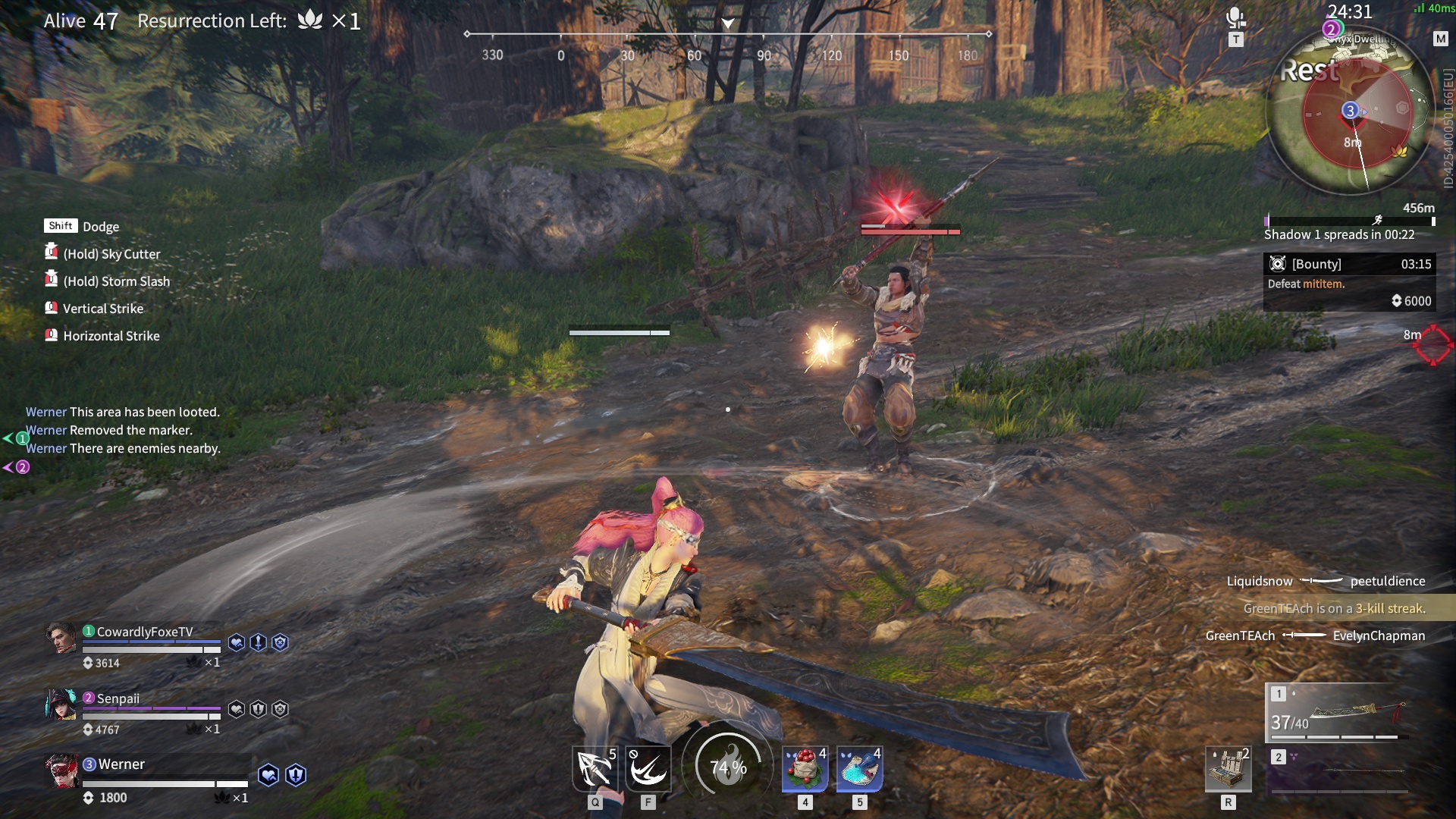
In practice, however, we first found it extremely difficult to acquire this knowledge at all during our tests. After we had effortlessly dominated the bot games and met the first real enemies with a completely misplaced feeling of superiority, we were hit in the mouth.
The lightning-fast battles seemed far too chaotic, unfair and inscrutable – and we spent hours dying in frustration from one game to the next. Until at some point a light finally dawned on us and we began to question not the game, but our way of playing. Because spamming the standard combos, which worked brilliantly against AI opponents, becomes a death trap against real enemies. Far too predictable and therefore easy to parry.
The way to success is: Less is more. Think of fighting games like Street Fighter or Tekken. Of course you can win a match by jumping around wildly and button mashing, as our little brothers and sisters and friends without their own consoles liked to make us feel in our childhood days. But you won’t stand a chance against skilled players.
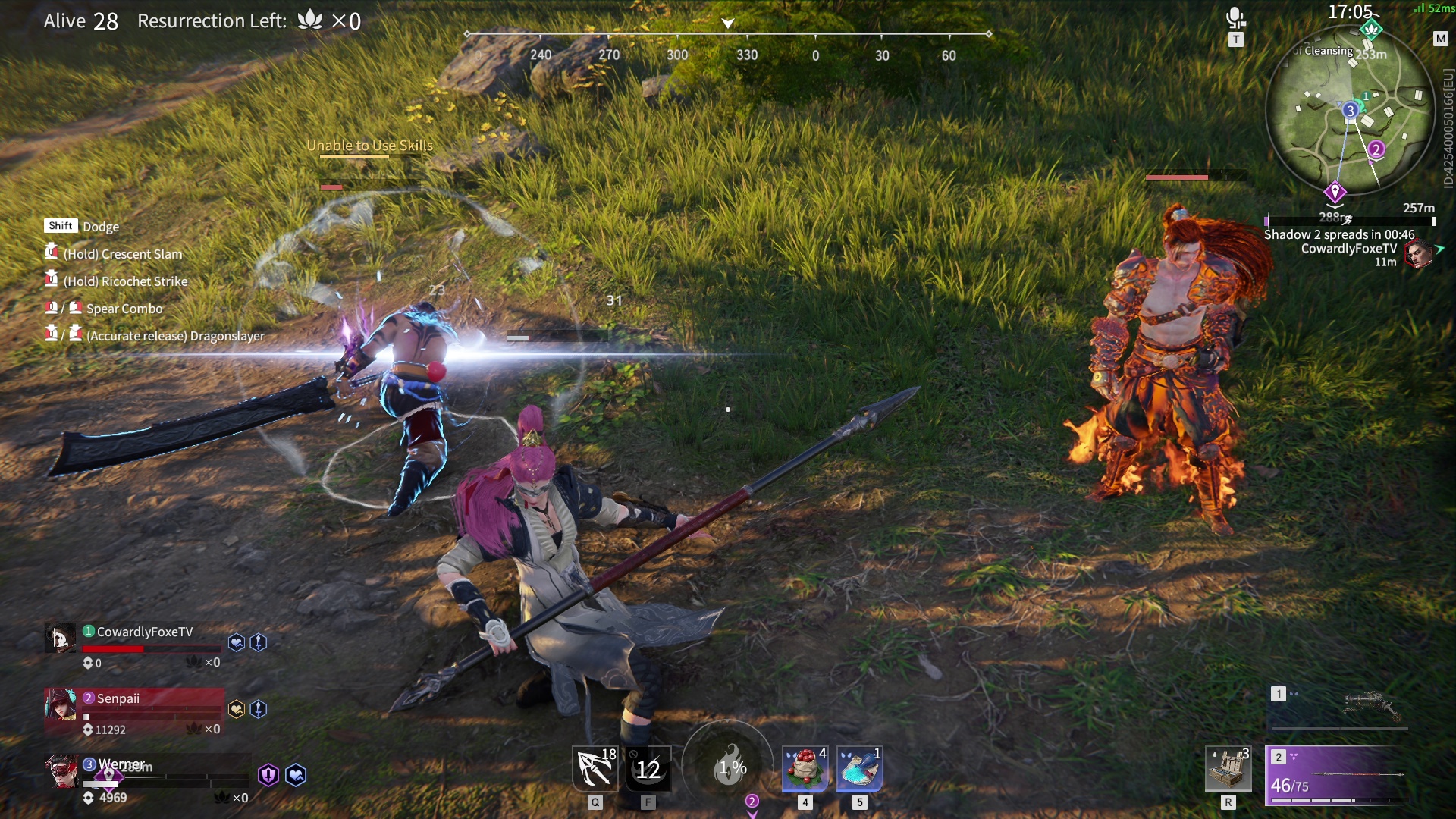
Whoever wants to win has to invest a lot of time in mastering the mind game of punches, parries and dodges. Such is the case in Naraka. Once the basics have been internalised, you’ll get challenging and exciting fights with every game, in which it’s a matter of provoking your opponent’s missteps and recognising and exploiting them in a split second.
Another tactical tool are the characters’ skills: Currently, there are seven heroes to choose from, each with two active skills. The desert fighter Matari, for example, can teleport over short distances, while the monk Tianhai transforms into a powerful titan with his Ultimate. However, these skills do not determine the battles, but merely enrich them.
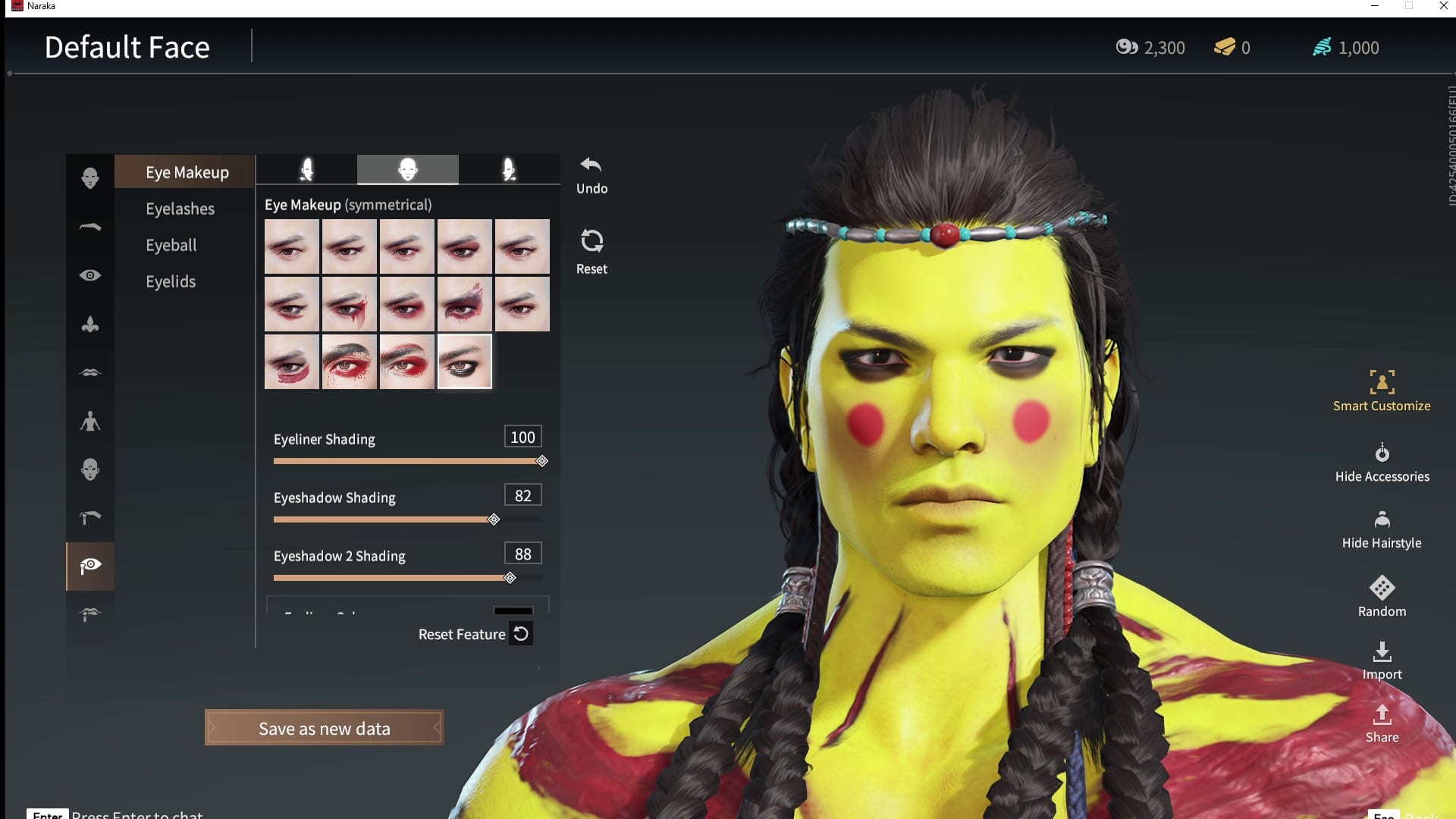
Who is Naraka: Bladepoint worth playing for?
Due to its successful battle system, Naraka: Bladepoint is an above-average game for us – at least after the initial frustration has been overcome. Whether you will feel the same way depends mainly on your patience. Are you a fan of the Asian setting, do you like the Battle Royale mode and do you have the time and desire to really get to grips with the mechanics? Then Naraka could provide you with many hours of fun.
Casual players, on the other hand, will have a rather difficult time, especially since the matchmaking is not always fair – during our test period, we repeatedly fought with and against players who were ranked significantly higher.
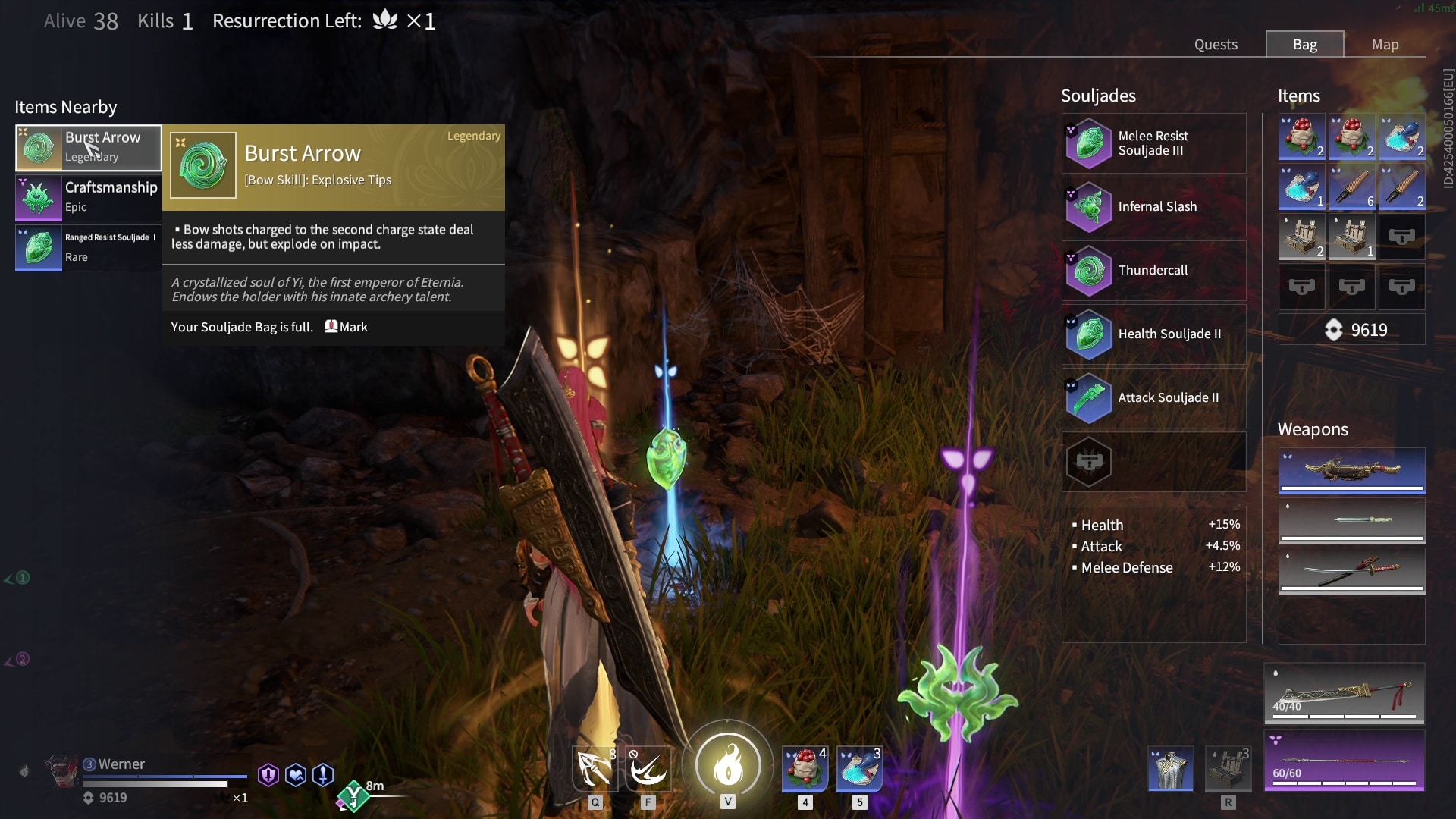
In addition, you should be aware of the technical problems: Since there is currently no region lock, many Asian players are also cavorting on the European servers. This means that the actually great duels are sometimes determined by chance, despite good pings. Crystal-clear hits are no longer registered and vital actions such as dodging and parrying become a game of chance. At least 24 Entertainment has announced that they are working on this problem.
So if you have the patience to internalise the game mechanics and wait for the developers’ bug fixes, Naraka: Bladepoint will be the most exciting Battle Royale of the year so far.

